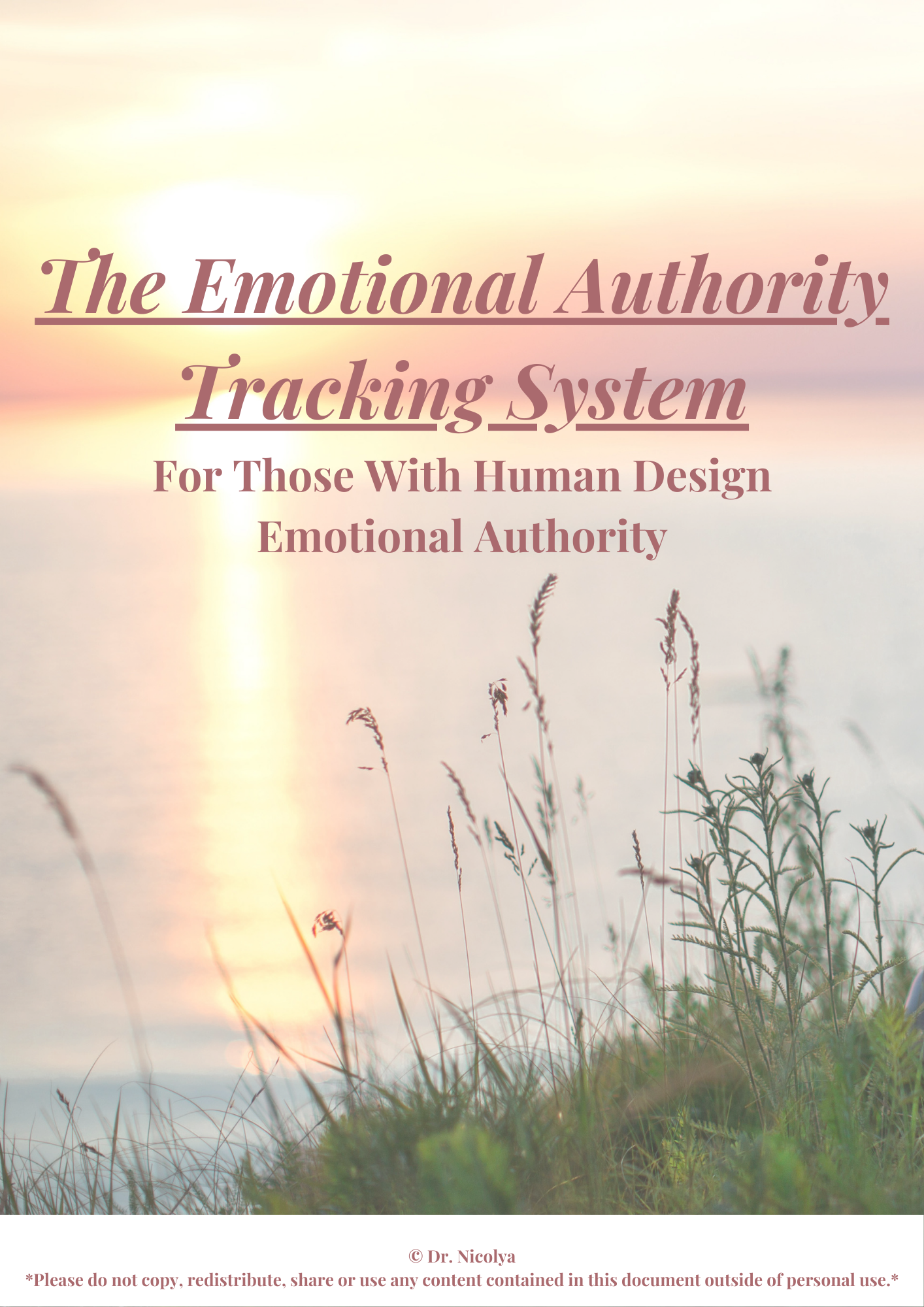Emotional Authority in Human Design And How To Track It
Emotional authority in Human Design refers to the specific decision-making process of individuals who have an emotional center defined in their chart. Approximately 47% of human beings are said to have emotional authority. People with emotional authority make decisions based on an emotional process that involves getting clear in the body over time.
But the truth is this takes a lot of practice and a lot of grace!
With your emotional authority, you possess a unique energy and a deep connection to your emotional state. The emotional wave in Human Design refers to the natural ebb and flow of your emotional state. Your emotional wave can have a significant impact on how you interact with the world and make decisions. Your wave may have a distinct pattern or fluctuate more rapidly. Understanding your specific emotional wave is key to harnessing its power.
To track your emotional wave in Human Design, you can follow these steps:
Determine if you have emotional authority: Emotional authority is one of the decision-making authorities in Human Design. Look at your Human Design chart to see if you have an emotional center defined. If you do, then you have emotional authority.
Consider the type of emotional wave you have: In Human Design, there are three types of emotional waves: individual, collective, and tribal. These waves refer to different patterns of emotional energy that individuals with emotional authority experience. Here is a brief explanation of each type:
Individual Wave: Individuals with the individual wave experience intense emotional highs and lows. This wave tends to have more dramatic fluctuations, with periods of excitement and enthusiasm followed by periods of frustration or dejection. The channels that produce an individual emotional wave are 39-55 (The Emoting Channel) and 12-22 (The Openness Channel).
Collective Wave: The collective wave is characterized by a more stable and gentle flow of emotions. People with this wave may not notice the shifts in their emotional state as strongly. The collective wave can often influence family or community relationships, working like a ratchet effect to manage interactions within the group.The channels of the collective emotional wave are 41-30 (The recognition channel) and 35-36 (Transcience Channel) .
Tribal Wave: The tribal wave is considered the mildest of the three waves. It flows up and down in a gentle manner, with the emotional feeling being more subtle. It may not be easily noticed by others, but it can still impact interpersonal dynamics within a family or community. When your solar plexus is defined through the channels 37-40 (Channel of Community) or 49-19 (Channel of Synthesis) you have a tribal emotional wave.
Knowing and understanding your emotional wave can provide valuable insights into your own emotional patterns and tendencies. It helps you to become more aware of how your emotional energy fluctuates and how you naturally respond to various situations. This self-awareness can lead to a deeper understanding of yourself and your emotional needs, allowing you to make more informed decisions and navigate challenges with a greater sense of clarity and authenticity.
Observe your emotional responses: Pay close attention to your emotional responses and patterns throughout the day. Notice the ebb and flow of your emotions and how they impact your decision-making process.
Recognize your emotional wave: The emotional wave in Human Design refers to the natural cycle of emotional ups and downs that individuals with emotional authority experience. It is essential to recognize and understand the pattern of your emotional wave. This can include periods of emotional clarity, excitement, frustration, dejection, and more.
In my new Human Design Emotional Wave Tracker I help to make this process seamless.
Give yourself time and space: To track your emotional wave effectively, it's crucial to provide yourself with the time and space necessary for processing your emotions. Allow yourself to fully experience and express your emotions without judgment or resistance.
Keep a journal: Maintain a journal to record your emotional experiences and the decisions you make during different phases of your emotional wave. This can help you identify patterns and gain insight into how your emotions influence your decision-making.
Reflect and learn: Regularly reflect on your emotional wave and the decisions you've made. Observe how your emotions have influenced your choices, whether positively or negatively. Use this awareness to make more informed decisions in the future.
Remember, tracking your emotional wave is an ongoing practice that requires self-awareness, patience, and reflection. It can provide valuable insights into your decision-making process and help you align with your emotional authority in Human Design.
Having an emotional authority in Human Design may bring its own challenges and complexities. I know because understanding my wave has been one of my greatest challenges to date. This is what inspired me to create a tracker. I essentially made the very thing I needed most in the early stages of my human design journey.
With this workbook, I help you better understand how to track and notice patterns with your emotional wave. In turn this will become a life changing routine and a powerful practice that can lead to greater self-awareness and fulfillment.


